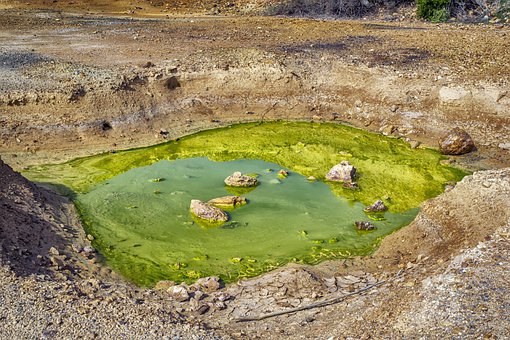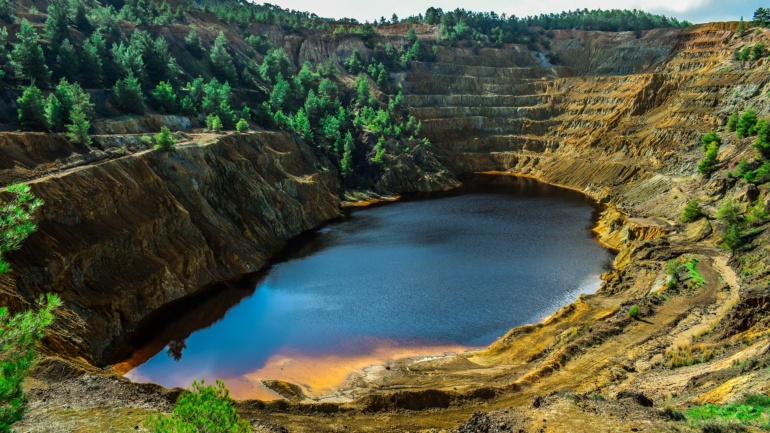By Sophia Arnao, Intern, Associate Researcher – Pubishing for Save The Water™ | December 12, 2015
On November 5, the collapse of a tailings dam containing over 50 billion gallons of iron-ore mining waste took a heavy toll on local communities in Minas Gerais, Brazil (Eisenhammer, 2015). Eleven people are reported as killed while others remain missing. The entire village of Bento Rodrigues was buried under wastewater and mudslides as homes were destroyed within. Inevitably, this incident had negative consequences on the environment as well, causing widespread water contamination and threatening biodiversity in the polluted river’s ecosystem.
The Fundão dam, operated by the mining company Samarco, collapsed first and spilled into the Santarém dam and waste from both began to flow to nearby cities and into a vital river. The toxic mud wave, which has been slowly traveling down the Rio Doce for several weeks, has now reached the Atlantic, adding a dangerous mix of arsenic, zinc, copper, mercury, and other substances to the water during its 500-kilometer journey. This river had supplied hundreds of thousands of people in several municipalities, but the condition of the river has now left much of its water rendered untreatable for human consumption. In addition, much of the area’s aquatic life has been killed by the toxic conditions.
Governador Valadares, a city almost 200 miles from the site of the burst, has cut off its municipal water supply to protect its citizens. Vale, one of the companies that owns the Fundão and Santarém dams, is sending water trucks and other aid to effected villages to help those who have lost access to city water.
Unfortunately, this isn’t the only case of a failed tailings impoundment in recent years. Since 1960, there have been over 100 occurrences of collapsed tailings dams or impoundments around the world that have often had dire consequences (WISE Uranium, 2015).
Tailings dams consist of the mud-like waste material left over when rocks are mined and crushed up in order to remove ores and specific metals (Gavett, 2012). The particles that do not contain desirable product are mixed with water and become “tailings.” Such large quantities of metal waste are likely to be poisonous, and because of this, they cannot be dumped into a sewer system or a landfill. To dispose of the unwanted residue, mining companies must build special reservoirs to contain the billions of gallons of waste.
However, since the tailings have no financial value to the mining industry, the dams or impoundments are often built in the most cost-effective and convenient way possible to meet required standards. This often results in the structures breaking and releasing a slurry of dangerous metallic sludge.
These dam failures are somewhat preventable if the right precautions are taken. The dam’s ability to hold up for perpetuity as it is meant to hinges on the proper design. Therefore, architects must be informed of important features and conditions of the area and keep those in mind when designing the dam. Proper materials must be used when constructing the actual embankment as well.
Michael P. Davies, author of “Tailings Impoundment Failures: Are Geotechnical Engineers Listening?” says that constructing tailings dams should leave little room for error. Unfortunately, the abundance of tailings dams failures in the past century doesn’t seem to be changing much. He argues that many of the failures in history have been a direct result of geotechnical design failure, and in spite of the previous failures, Davies (2002) believes they “should be less common in modern geotechnical practice.”
We don’t as often hear of water dams bursting, perhaps because greater care is taken when building them. On the other hand, it is more difficult to maintain structural integrity of tailings dams because of the fact that as time passes and more waste is produced, the walls must be built up. However, with competent architecture and quality construction, the risk of collapse decreases.
In other words, quality should be taken over convenience. While it might be quicker to build an embankment without taking the time to look over architectural models and find a proper design for a particular region, it doesn’t necessarily mean it will have the durability to last lifetimes worth of mining waste piling up inside it.
Also, mining companies responsible for these dams should have backup plans in case they do collapse to prevent the wastewater from killing people, harming wildlife, and polluting hundreds of miles of clean water. For example, they could build another wall around the original sloped wall or have a way to block off the river at a certain point if necessary to stop the mud wave before it can reach any cities past the blockage.
While it may seem more expensive and less practical to spend so much on storing waste, in the long run, it could pay off for companies. We don’t know for sure what caused the dam to burst, but it is certain that Samarco now must pay a whopping $262 million for the initial cleanup fee for the chaos caused by the dams–and that doesn’t cover lawsuits or other financial and reputational damage.
So perhaps the old adage “better safe than sorry” is true. The mining industry remains one of the most important in the world, and tailings are an unavoidable part of that. But if we can learn to contain them better, even if it means paying a lot more up front to have a strong architectural foundation and proper building materials, the cost on the environment and on our lives will be less in the end.
References
Davies, M. P. (2002). “Tailings Impoundment Failures: Are Geotechnical Engineers
Listening?.” Pebble Science. Retrieved from
http://www.pebblescience.org/pdfs/Dam_failuresDavies2002.pdf.
Gavett, G. (2012). “Tailings Dams: Where Mining Waste is Stored Forever.” Frontline.
Retrieved from http://www.pbs.org/wgbh/frontline/article/tailings-dams-where-mining-
waste-is-stored-forever/.
Eisenhammer, S., & Nogueira, M. (2015). “Brazil mine dam burst endangers water
supply far downstream.” Reuters. Retrieved from http://www.reuters.com/article/2015/
11/09/us-brazil-damburst-idUSKCN0SY1Y920151109#SoomY2pPGsfk47Xt.97.
Unknown. (2005). “Backgrounder: Tailings and Tailings Management.” Retrieved from
http://www.northerndynastyminerals.com/i/pdf/NDM_Backgrounder_Sep05.pdf.
Engels, J. (2012). What Are Tailings? – Their nature and production. Tailings.info. Retrieved
from http://www.tailings.info/basics/tailings.htm.
Penman, A. D. M., et al. (2001). “Tailings Dams: Risk of Dangerous Occurrences.” United
NationsEnvironment Programs. Retrieved from http://www.unenvironment.org/
pdf/2891-TailingsDams.PDF.
Douglas, B. (2015). “Brazil’s slow-motion environmental catastrophe unfolds.” The
Guardian. Retrieved from http://www.theguardian.com/business/2015/nov/13/
brazils-slow-motion-environmental-catastrophe-unfolds.
Adjuto, G., & Foster, N. Trans. Anchieta, A. (2015). “Towns located along Rio
Doce river cut off water supply.” Agência Brasil. Retrieved from
http://agenciabrasil.ebc.com.br/en/geral/noticia/2015-11/towns-located-along-rio-doce-river-cut-water-supply.
U.S. Environmental Protection Agency. (1994). “Design and Evaluation of Tailings Dams.”
U.S.Environmental Protection Agency. Retrieved from http://www3.epa.gov/epawaste/
nonhaz/industrial/special/mining/techdocs/tailings.pdf.
“Chronology of major tailings dam failures.” (2015). WISE Uranium Project. Retrieved from
http://www.wise-uranium.org/mdaf.html.





